5. The Good, The Bad, and the Ugly (1966)
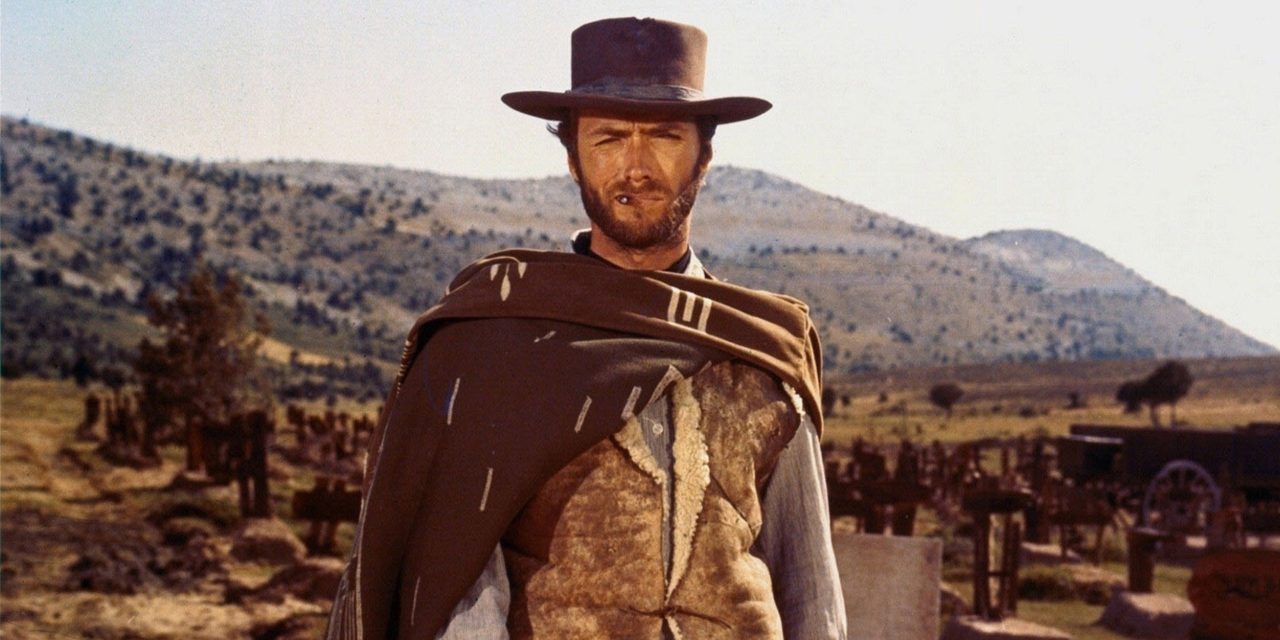
Perhaps the single most iconic western of all-time, Sergio Leone’s 1966 masterpiece is so ingrained within popular culture that it’s easy to forget what a breakthrough it was. At the time, westerns rarely focused on the visceral violence that Leone was so keen to show, and by showing the ramifications of the characters’ actions, Leone moved away from the romanticism of the genre. Even Clint Eastwood’s character, the supposed “Good” one, is rife with moral ambiguity.
It’s this sordid ambiguity that makes The Good, The Bad, and the Ugly so fascinating, because the characters are motivated purely by their own greed. While the characters share the same goal, they take wildly different approaches to achieve it, and in turn expose themselves as representatives of the good, bad, and ugly of human nature. It’s important to note the Civil War backdrop, as the massive conflict serves as a reminder of the hardships that so many would face.
4. The Man Who Shot Liberty Valance (1962)
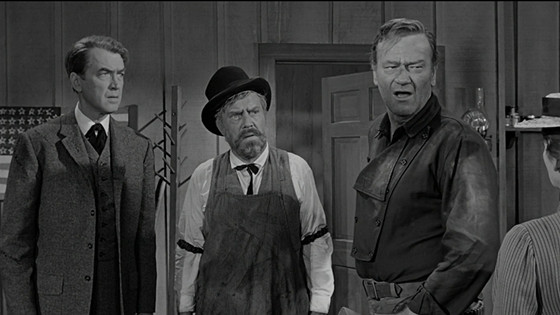
John Ford and John Wayne collaborated on many westerns, each of which was unique in its own way, but one of their later works, The Man Who Shot Liberty Valance, solidified itself as a deconstruction of the genre. Told in flashbacks, the film explores the relationship between a naitve attorney (James Stewart) and a local gunslinger (John Wayne), and how they came to be intertwined with the titular villain Liberty Valance (Lee Marvin). The film explores the relationship between politics and legend, and the differences between being a public servant and a mythic cowboy.
By telling the story in flashback, Ford explored how the spread of formal politics in the American west led to the increased irrelevance of characters like Wayne’s. However, as is evident in the film’s chilling final line, there’s still a reverence for action and violence, and in many ways Stewart and Wayne built their reputation in the same way.
3. Unforgiven (1992)
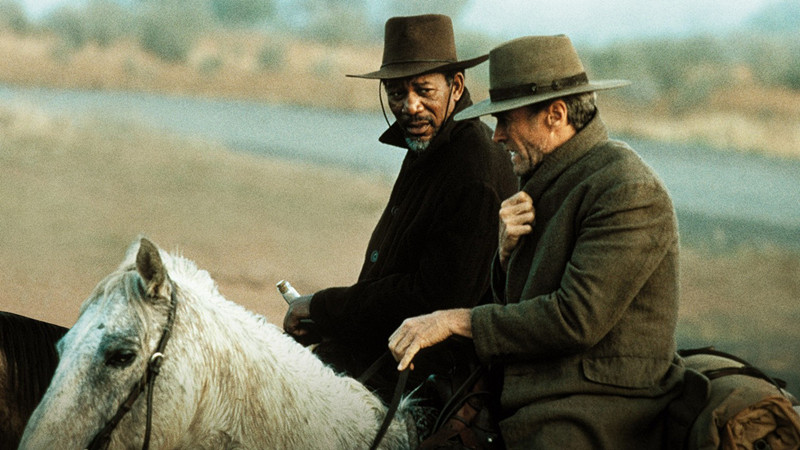
Clint Eastwood’s final foray into the genre that he built his career on isn’t just a summation of all the characters he’s ever played, but a maturation of the psyche of the western gunslinger that looks at the lived-in consequences of that lifestyle. Eastwood’s character Will Munny is a man of legend that has attempted to atone for his mistakes by living a simple life, but he’s once again drawn into the world of violence that he’d been accustomed to. As the film’s final moments prove, redemption isn’t possible in a world so bleak.
Eastwood strips away all the cliches of the genre and creates characters and situations that feel real, and over the course of the film each character gradually admits that they are not entirely who they claim to be. Unforgiven shows what becomes of western legends, and the lasting impact that their stories have.
2. The Searchers (1956)
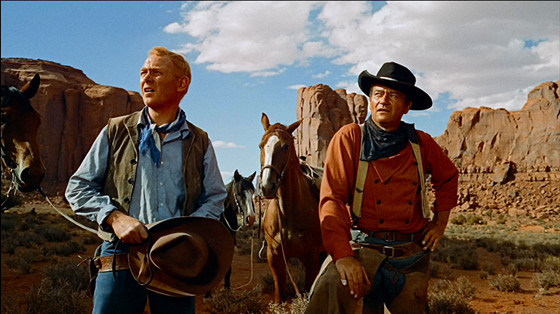
The finest western that John Wayne and John Ford ever collaborated on, The Searchers is a brutal odyssey into the nature of obsession, vengeance, and prejudice, questioning how the ends justify the means when it comes to justice. Although John Wayne’s character Ethan Edwards is framed as the hero of the story, it’s clear early on that his pursuit of his niece’s kidnappers is based primarily on his hatred of the Comanche, and that his appetite for violence will never truly be satisfied.
It’s this sickening racist core of the character that makes Edwards unlike any other western character; when he finally encounters his niece Debbie (Natalie Wood), he’s more infuriated by her assimilation to the Comanche culture than relieved at her safety. While The Searchers’s visual poetry would go on to inspire countless filmmakers, including David Lean, Martin Scorsese, George Lucas, Paul Schrader, and Jean-Luc Goddard, it’s this underlying philosophy behind the motivations of a quest that make it such a monumental cinematic achievement.
1. Once Upon a Time in the West (1968)
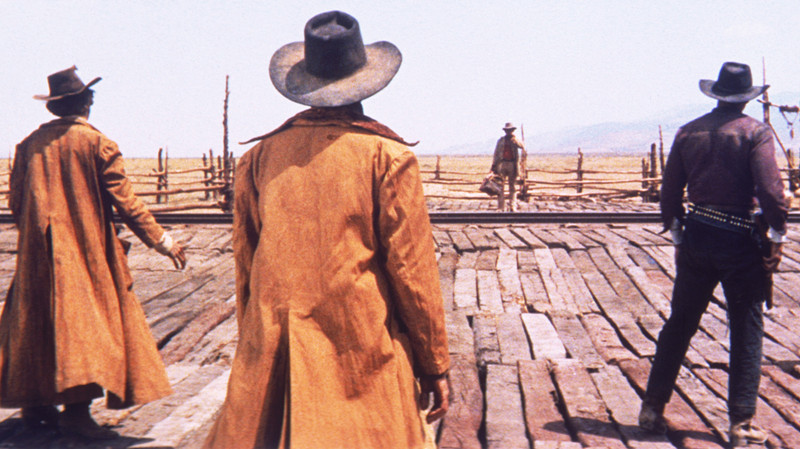
Sergio Leone had already created three of the most iconic westerns ever made with the Man With No Name Trilogy, but in 1968 he redefined the genre even further with his dazzling masterpiece Once Upon a Time in the West. The film explores the nature of western legends, with its central narrative framed around the construction of a railroad that would essentially put an end to the western era. Compared to the fast pace of Leone’s earlier films, Once Upon a Time in the West draws tension out of silence that predates violence, putting more emphasis on existential dread than direct conflict.
Leone puts an emphasis on dispelling western mythology by featuring less elaborate gunplay, and the characters are more realistic than his earlier films. In a bit of subversive casting, iconic Hollywood good guy Henry Fonda stars as the villainous Frank, a sadistic killer who isn’t above murdering children and torturing his victims. In fact, it’s the silent, grim sunslinger known only as “Harmonica” that is the hero of the story.
While a climactic gun duel is often an eventuality in a western, Leone builds to the final showdown by revealing bits of history between the characters in key moments. Their conflict spells not only the end of the film’s story, but the end of the western era, and Leone’s grandiose vision solidifies itself as the most philosophically profound western of all-time.